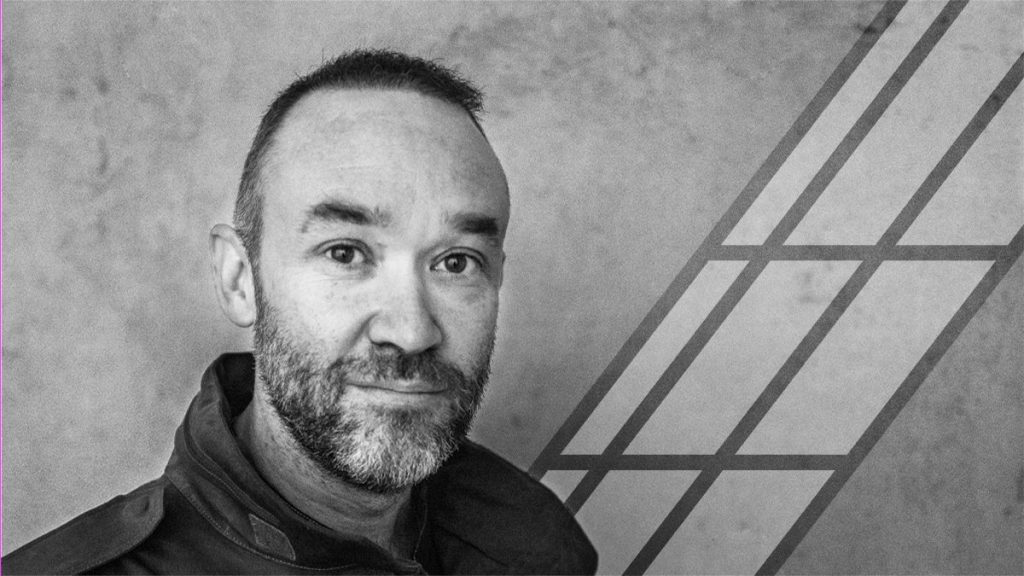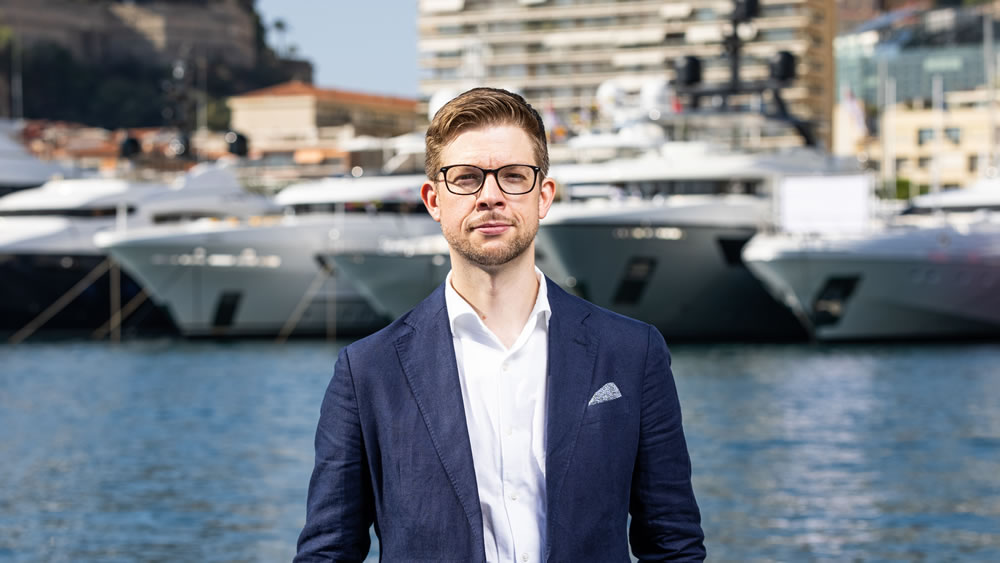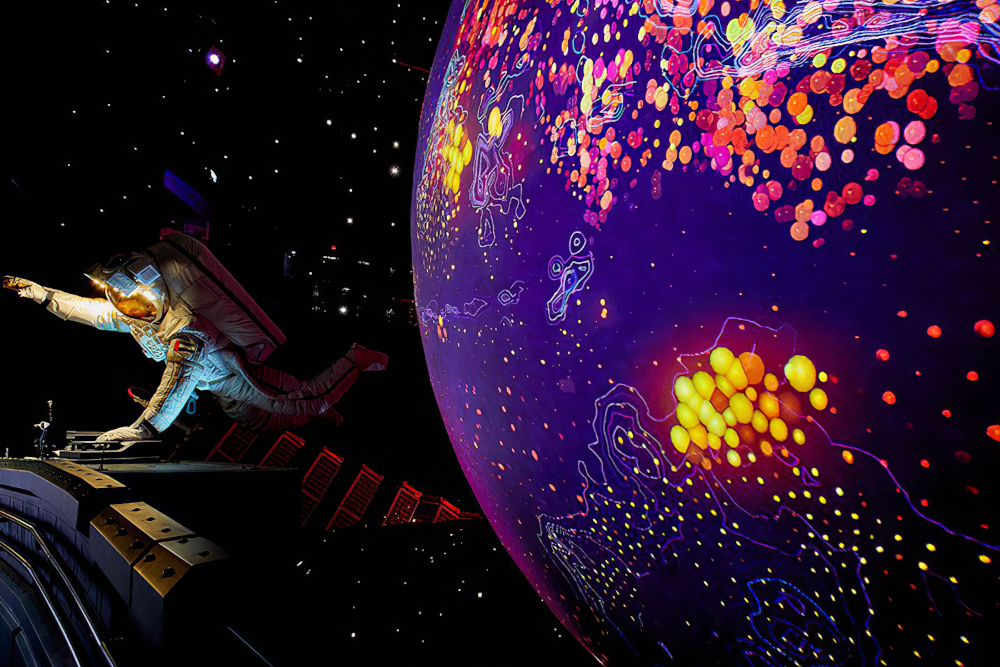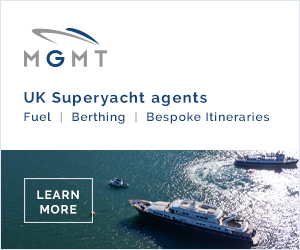Immersive is an innovation-driven visual art company and design specialist that can transform any space, from global events to intimate private spaces. They’ve worked with some of the world’s most significant events and international brands, such as the London Olympic Games, FIFA World Cup and BMW. With expertise in custom luxury design, they are looking to make their mark on the superyacht industry. Today we chatted with John Munro and Tommy Lexen of the cutting-edge design company.
Tell us a bit about yourself and your time at Immersive?
John Munro CEO (JM): After studying Architecture, Design Theory and Fine Art, I created Immersive to begin a creative movement into large scale spatial storytelling. I founded the studio in 2004 when Experiential Art and Design was just starting to grow as an industry. We were pioneers of the industry, creating projection mapping before it was even called projection mapping. At Immersive, I have been lucky enough to direct all projects creatively. I have had the fantastic support of an incredible team that embodies the forward-thinking spirit of the company.

Tommy Lexen MD (TL): I joined Immersive in the summer of 2019 as the Head of Studio and Executive Creative Director. This January, I moved into my role as the Managing Director. Creatively, I’ve led the studio’s work for the Mobility Pavilion in Expo 2020, amongst other projects. We’ve also been busy tailoring our skillset for private commissions with the luxury market and growing our presence in London and at our satellite studios around the world. My career has always focused on using innovations to tell engaging stories with world-class artists, so working on Immersive’s varied projects and sitting at the cutting-edge of innovations in this industry is a culmination of that work.

What has been Immersive’s largest project to date?
TL: The Mobility Pavilion at the 2020 Dubai Expo! The Mobility Pavilion is the biggest thematic pavilion at the event. Designed by Foster + Partners, it houses a three-act immersive theatrical environment that explores stories of mobility in the past, present, and future. We directed, designed, and delivered the experiential media and content across nine installations for the second and third acts. We wanted to make the world’s greatest show and deliver cutting-edge experiences visitors have never experienced before. It’s been so exciting to see it open to the public after COVID-related delays.
JM: I agree with Tommy. We directed, designed, and delivered the experiential media and content across nine installations for the second and third acts, working in close collaboration with the brilliant team from EXPO 2020, MET Studio and ALEC Fitout. Creating the ‘Stadium Screen’ for the London 2012 Opening and Closing Ceremonies was our largest project, dimension wise. Our largest permanent installation was produced for Comcast with Steven Spielberg and installed in their reception, next to a Jenny Holzer artwork and a Conrad Shawcross installation.

What led Immersive to the superyacht industry?
TL: In recent years, the luxury market has been offering higher levels of exclusivity and customisation to its clients. Also, the evolution of immersive and CreaTech industries are creating massive potential for bespoke luxury experiences. More and more, we see traditional methods of displaying artworks or screening narrative-driven content becoming redundant – people seek intimate, multidimensional environments that uniquely respond to them and transport them beyond the everyday. What we’ve seen as a result is clients commissioning Immersive to apply our unique skill set and creativity to custom luxury projects.
JM: The superyacht industry is known for artistic innovation of the highest quality. Immersive has been at the forefront of bespoke installations that are future proof and stand the test of time. Our technology is a perfect fit with the demand for exclusivity and customisation within the superyacht industry.
How closely do you work with the owner on the brief? Also, do their needs and wants to dictate the project?
TL: The individual tastes of the owner informs all the decisions made. Each Immersive design is entirely bespoke, resulting in a one-of-a-kind experience tailored to their artistic tastes and how they envision their life on the superyacht. We work collaboratively with the whole project team to bring the experience to life. Interior designers, shipyards, project management and operational teams, technical teams, and suppliers are all part of the process.
What are the unique challenges you have faced during the design and installation process on a superyacht compared to home installation?
TL: Every project has unique challenges, especially when it’s a permanent installation. We have expertise in designing for the unique spatial aspects of complex environments. Often, in our commercial work, they are huge scale venues or outdoor installations. However, with superyachts, there are different factors. Designing for smaller, more intimate, and much more personal environments are some of these.
Of course, yachts aren’t static, so we must plan for the experience to work no matter where it is! This applies to connectivity and also the potential issue of being offline. We ensure there is a Minimum Viable Product approach available. This assures that the core function of the environment can still operate in some capacity, even with technical issues.
Issues with access to superyachts have also arisen; however, we use virtual prototyping. This allows us to test every aspect of our work before we are physically on board.
Do you work closely with the crew to ensure the equipment going on board is easy to manage and maintain?
TL: Absolutely! Ensuring the yacht crew know how to manage any issues that may arise after they set sail is vital. We make sure they have the specialist knowledge or specific training as a part of our holistic project development.
Specific details of Immersive’s upcoming projects are confidential at this time. Watch out for any updates.


.gif)






.gif)









